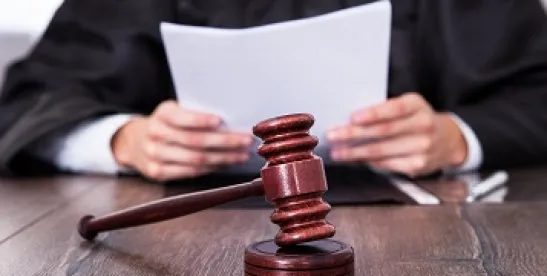I am on record many times opining that the TCPA’s expansive rule permitting personal liability against officers and directors of companies that “participate in” sending unlawful texts or calls—even if by accident—is amongst the most unfair rules in all of American jurisprudence.
It is ironic, then, that the same corporate formalities that ought to shield such officers from liability continue to work with precision in insulating related corporate entities from harm in TCPA suits.
Here’s a big win for the corporate form: Holland v. JPMorgan Chase Bank, N.A., 19 Civ. 00233 (PAE), 2019 U.S. Dist. LEXIS 146553 (S.D.N.Y. Aug. 28, 2019). There it was held that calls made by one JPMC entity were not attributable to another related entity. Even more nifty, the Court enforced the classwide release entered in the big Gehrich TCPA settlement from a few years ago. (Notably, I won two back-to-back awards enforcing a similar provision in a different classwide settlement following evidentiary hearings in federal district court last year. Remind me to tell you the story next time we chat.)
In Holland Plaintiff sued two different banking entities— JPMorgan Chase Bank, N.A and Chase Bank USA, N.A. While the two entities sound related—they are—they are also separate. At least they were. They merged in late 2018. You see where this is going.
Plaintiff sued both banking entities under the TCPA although the calls at issue were placed only by Chase Bank USA. JP Morgan Chase Bank challenged the suit against it on Article III standing grounds (probably not the right vehicle technically speaking but it got the job done quick and at the pleadings stage so…well done.)
In addressing Plaintiff’s standing to assert a claim against JPMCB, the court notes that corporations are allowed to organize in a way to insulate related entities from liability. So, despite having a common parent, CBUSA and JPMCB were entitled to “the presumption of separateness afforded to related corporations.” Just that simply, CBUSA’s alleged robocalls, “which pre-date the merger of JPMC[B] and C[BUSA], thus cannot be attributed to JPMC[B].”
That all makes sense, but then things get really interesting. Under the merger, JPMCB “appears to have acquired the assets and liabilities of C[BUSA]— presumably including any potential liability arising from this lawsuit.”
*Insert that little chin scratching emoticon here*
But as the Court explains, although Plaintiff may have standing to sue JPMCB on a vicarious liability theory based on calls made by CBUSA, that is not the same thing as Plaintiff being enabled to sue JPMCB directly, as Plaintiff attempted to do in the suit. JPMCB simply didn’t do anything with respect to calls to Plaintiff. CBUSA may have, and JPMCB may have to answer for CBUSA’s conduct, but Plaintiff cannot allege a claim against JPMCB for its own conduct where, again, there was no conduct.
That sort of makes sense. But what about the claims against CBUSA that are attributable to JPMC by virtue of the merger?
Well back in a case called Gehrich v. Chase Bank USA, N.A., 316 F.R.D. 215 (N.D. Ill. 2016), CBUSA settled a large number of TCPA claims on a classwide basis including, it seemed, the claims of the named Plaintiff in Holland. But Holland persisted with his claim contending that he never received notice of the Gehrich settlement. Oh come now.
The Court swiftly rejected Holland’s argument as notice of a class settlement does not need to result in actual notice—at least in the view of most courts—and only needs to amount to the best notice practicable under the circumstances. Notice in the Gehrich settlement was sent via mail, email, and publication in national magazines, and class members were contacted a second time as a reminder. The district court in Gehrich even noted that this approach was probably overkill: “the notice provided went well beyond what was required.” And the Holland court whole-heartedly agreed. So Plaintiff’s failure to receive actual notice of the settlement changed nothing.
Finally, the Court found that claims for any pre-Gehrich calls were time-barred by the statute of limitations. Plaintiff argued that the pendency of another TCPA class action against a related JPMC entity tolled the statute of limitations, but the Court rejected that argument on the same “corporate form” argument that resulted in the dismissal of JPMC from the case to begin with. Stated simply: a class action against a sister entity does not toll claims against a different defendant. (That’s actually a pretty good ruling to have handy–you don’t see that argument arise very often.)
One last fun fact: Plaintiff also launched a “nuclear” CAFA challenge arguing that Gehrich is not even enforceable because CBUSA failed to serve proper notice under CAFA. Eesh, that’s a scary argument. But the Court rejected the challenge—which was premised on CBUSA’s purported failure to notify the Mississippi State AG—because a deposit institution need only notify its primary federal regulator under CAFA. Interestingly, however, the Holland court does not mention who that primary regulator is–its actually tricky since the FCC is not a depot institution’s primary regulator, the OCC is– or recite that notice was actually given to that regulator in Gehrich. In any event, the CAFA argument was rejected.
There you go TCPAWorld, corporate formalities continue to serve as a firewall containing exposure to specific segments of related entities– but beware officers and directors of those entities.




 />i
/>i

